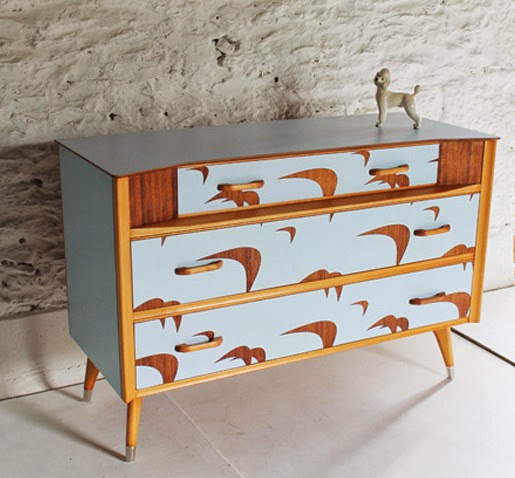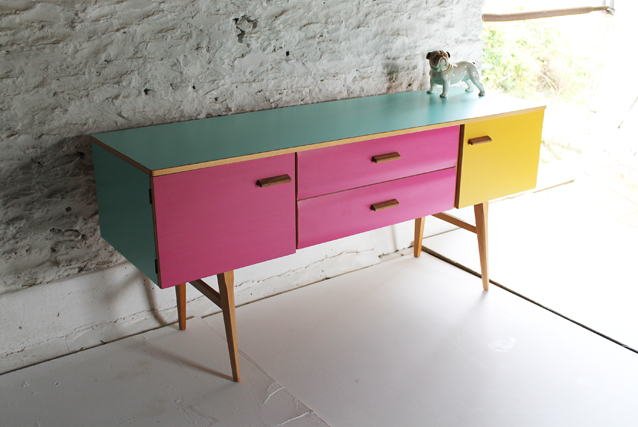Paul Frankl (1886-1958) was born in Vienna where he studied architecture before coming to the United States in 1914. He was one of the principal shapers of American modernism.
Soon after arriving in the U. S., he began designing stage sets for the Theater Guild, and shortly thereafter he began designing furniture with shapes reminiscent of the Rockefeller Center and the Empire State Building. He called this series his
Skyscraper furniture, and it is emblematic of the Art Deco period.
In the early 1920s Frankl opened a shop in New York City, and his work included furniture, accessories, modern textiles, wallpaper and an interior design service. In addition to his
Skyscraper line, he began to create furnishings with Asian influence which featured lacquer surfaces.
In 1928 he was co-founder of the American Designer's Gallery and in 1930 he founded the American Union of Decorative Artists and Craftsmen. He gave lectures on "The Skyscraper in Decoration" and wrote
New Dimensions: The Decorative Arts of Today (1928);
Form and Re-Form (1930) and
Space for Living: Creative Interior Decoration and Design. (1938)
In 1934 he moved to California, where he taught at the Chouinard Art Institute and the University of Southern California. He opened a shop on Rodeo Drive which catered to the Hollywood elite, such as Cary Grant, Katherine Hepburn and Alfred Hitchcock and designed for the mass market into the 1950s.
Some of his best-known work include his early use of biomorphic designs and new materials such as cork. He is also known for his rattan outdoor furniture.
From art-directory.info, antiquitiesweb.com, yalepress.yale.edu and askart.com
 |
Skyscraper cabinet
swanklighting.com |
 |
Biomorphic cork coffee table
1stdibs.com |
 |
Checkerboard step tables
1stdibs.com |
 |
Console table
1stdibs.com |
 |
Cork coffee table
liveauctionworld.com |
 |
Cork side table
treadwaygallery.com |
 |
Cork and mahogany bench
redmodernfurniture.com |
 |
Speed settee
1stdibs.com |
 |
Rattan setee
houzz.com |
 |
Rattan chair and ottoman
metroretrofurniture.com |












.jpg)









































